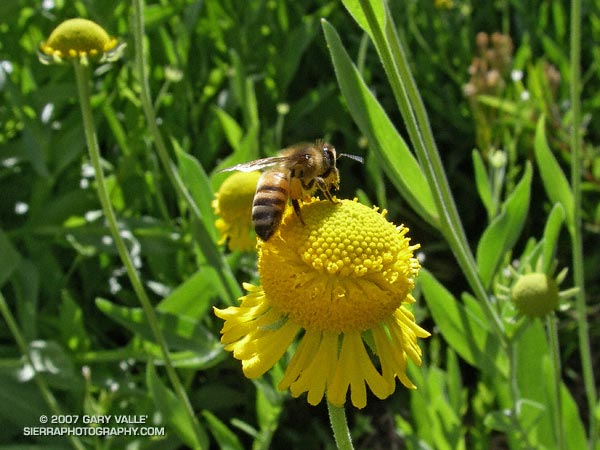
A bee forages on Bigelow’s sneezeweed (Helenium bigelovii) at Little Jimmy Spring. From Sunday’s Islip – Baden-Powell loop.

A bee forages on Bigelow’s sneezeweed (Helenium bigelovii) at Little Jimmy Spring. From Sunday’s Islip – Baden-Powell loop.
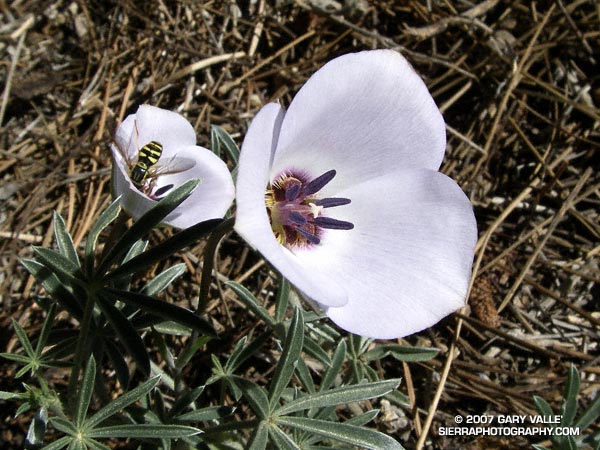
Mariposa lilies (Calochortus invenustus) blooming through the palmate leaves of a lupine at about 8500 ft., near Sawmill Mountain, west of Mt. Pinos.
According to data from the Consortium of California Herbaria, this species was documented in the Mt. Pinos area as early as 1897.
The wasp-like insect is a hover fly, probably Chrysotoxum festivum.
From Sunday’s Mt. Pinos-Mt. Abel Out & Back run.
Related posts: Plummer’s Mariposa Lily, Bee Fly On Western Wallflower
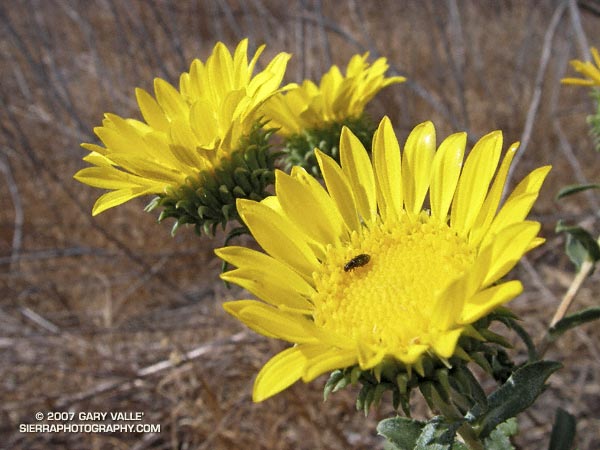
In a Spring in which there has been little rain and a reduced number of wildflowers, the vibrant yellow of gumplant has been a welcome sight along Ahmanson’s main trail in Upper Las Virgenes Canyon Open Space Preserve near the Victory trailhead.
This appears to be Grindelia hirsutula var. hirsutula, a species considered rare in Ventura County. It is reported that a species of gumplant was used medicinally by the Chumash, and other native peoples within its range, for treatment of pulmonary problems.
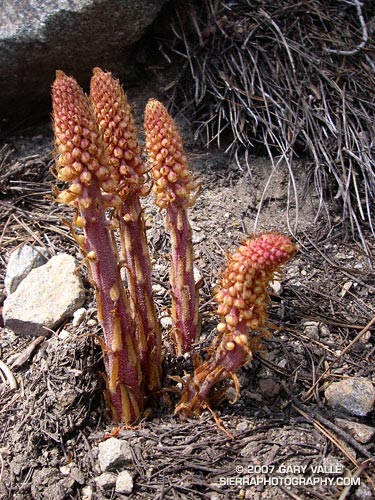
Pine drops (Pterospora andromedea) and snow plant (Sarcodes sanguinea) are related nonphotosynthetic plants that are found under pine and related trees, primarily in the mountains of the western U.S.
At one time it was believed that these plants were saprophytes, and obtained needed nutrients directly from decaying organic matter in soil. However, research has revealed a more complex parasitic relationship in which the plant obtains carbohydrate from a pine tree, by way of a shared mycorrhizal fungus.
The photograph was taken on the run described in Heat Wave, on July 16, 2006.
Related post: Snow Plant
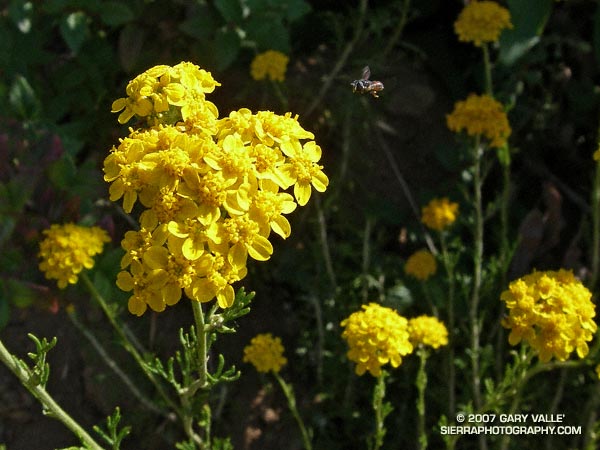
Perfectly sized to work the minute central disk flowers of golden yarrow, a tiny insect — perhaps a syrphid fly — hovers a few millimeters from the plant, assessing the risk of continuing to feed.
The compound flower head of the golden yarrow (Eriophyllum confertiflorum) is about the size of a green pea (10mm), and the individual disk flowers at its center are about 1/5 as large (2mm).
From a run at Sage Ranch Park on May 28, 2007.
Related post: Bee Fly on Western Wallflower.
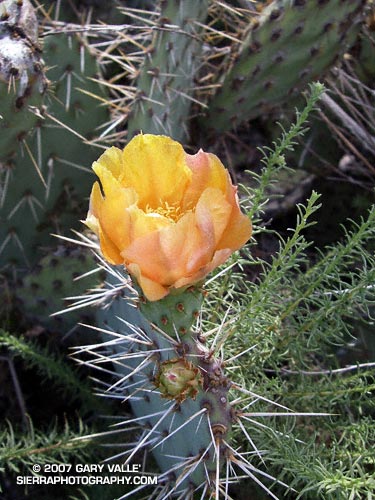
This prickly pear on Lasky Mesa appears to have many of the characteristics of the Engelmann prickly-pear, Opuntia engelmannii, but is more likely a cross involving O. engelmannii. One such cross is O. littoralis X (O. engelmannii X O. phaeacantha ) which is referred to as O. ×occidentalis in the Jepson Manual. Here’s a closer view of the stamens and pistil.
From a run in in Upper Las Virgenes Canyon Open Space Preserve (formerly Ahmanson Ranch) on May 23, 2007.